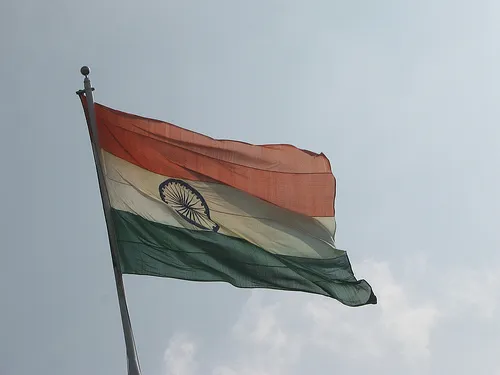
Easing of food inflation drives decline in India's inflation rate
Fuel made a hefty contribution, too.
India's CPI inflation decelerated more than expected in September to 6.5% y-o-y (vs. 7.7% in August), with slowdown being broad based, and especially sharp in food and fuel.
According to a research note from HSBC Global Research, if this trend is sustained, annual inflation is likely to drop further.
It would also put the central bank on track to achieve its next CPI target of 6% by January 2016.
However, the report said that this is not a given since several upside risks to inflation remain, which is why it is still expected that the RBI will remain in wait and see mode for an extended period of time.
Here's more from HSBC Global Research:
It's not just the base. Sequential momentum in inflation has declined notably led by weaker food and fuel. Moreover, core CPI is also decelerating steadily, which means we are on track to come below the RBI's 8% CPI target in January 2015.
However, it's important to remind ourselves that the goal post has shifted. The central bank's CPI target of 6% by January 2016 is now more relevant for policy purpose.
The sharp deceleration in food inflation even with the weak start to monsoons this year shows that government efforts, which included close monitoring of wholesale markets and supplementing local supply with imports has helped contain price pressures.
Apart from food, softer commodity prices and stable exchange rates have dampened fuel inflation. In addition, tight monetary and fiscal policy conditions have also contributed to the disinflation.
There's more to come, headline CPI in annual terms is likely to fall further in the coming months as the base effect from last year strengthens. Moreover, if seasonal fluctuations in food prices are contained in the coming quarter, the fall in annual inflation would be steeper than currently anticipated.
Despite the near-term cheer on inflation, achieving the RBI's next CPI target of 6% has several challenges. For one, there are multiple issues in food (43% weight in CPI) that cannot be solved in just a year.
Changing lifestyle patterns in rural India will continue to add demand for finer foods, which the agricultural sector may not be able to respond adequately, partly as a result of government intervention in the food market and insufficient supply chain infrastructure.
Second, cultivation in India is still heavily dependent on the success of monsoon rains, which makes next year's monsoon outcome important for the RBI's target. Third, the pick-up in growth will likely add to price pressures if reforms have not lifted supply potential sufficiently.
In addition, geo-political tensions which are still simmering in the background and the US Federal reserve's anticipated monetary policy tightening next year are risks in the horizon.
The RBI will draw a lot of comfort from the stronger than expected decline in food inflation in September, if this trend is sustained, the central bank remains on track to achieve its 6% CPI target.
However, the Bank is likely to look beyond the near term moderation and wait for further evidence that shows price pressures are contained in the economy. In the meantime, the RBI will most likely retain its current monetary policy stance to ensure sustained disinflation.
Bottom line: September CPI inflation slowed more than expected due to a broad based decline in price pressures. At this rate, annual inflation is likely to fall further and put the central bank on track to achieve its next year's CPI target of 6%.
However, risks to achieving this target remains on the upside which should keep the RBI in wait and see mode for an extended period of time.








![Cross Domain [Manu + SBR + ABF + ABR + FMCG + HBR + ]](https://cmg-qa.s3.ap-southeast-1.amazonaws.com/s3fs-public/styles/exclusive_featured_article/public/2025-01/earth-3537401_1920_4.jpg.webp?itok=WaRpTJwE)









 Advertise
Advertise


